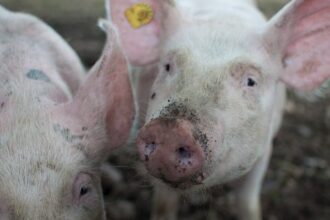Food manufacturers regularly incorporate preservatives into their products to extend shelf life. These preservatives primarily function by eliminating microbes that could decompose the food, leading to spoilage. Traditional preservatives such as sugar, salt, vinegar, and alcohol have been utilised for centuries. However, contemporary food labels often list less familiar additives like sodium benzoate, calcium propionate, and potassium sorbate.
Bacteria can produce substances known as bacteriocins, which eliminate competing microbes. These bacteriocins act as natural preservatives by exterminating potentially harmful pathogens within food products. Among these, lanthipeptides—a group of bacteriocins noted for their strong antimicrobial properties—are prevalently employed by the food industry and are colloquially termed “lantibiotics,” a blend of lanthipeptide and antibiotics.
Despite their everyday use, the effects of lantibiotics on human gut microbiomes remain poorly understood. The gut microbiome is a complex and balanced ecosystem where commensal bacteria play crucial roles in nutrient breakdown, metabolite production, and pathogen protection. The indiscriminate killing of these commensal bacteria by antimicrobial preservatives could lead to the dominance of opportunistic pathogenic bacteria, potentially causing issues as severe as those from consuming spoiled food.
Recent research highlighted in ACS Chemical Biology by the University of Chicago sheds light on the impact of antibiotics on both harmful pathogens and beneficial commensal gut bacteria. One such study focused on Nisin, a widely used antibiotic in various food products, from beer to cheese. Produced by bacteria in cow mammary glands, similar compounds are also naturally generated by human gut microbes. Zhenrun “Jerry” Zhang, PhD, a postdoctoral scholar in Eric Pamer’s lab at UChicago, investigated how these naturally occurring lantibiotics affect gut commensals.
Zhang expressed concerns about the long-standing inclusion of Nisin in food and its less-studied effects on gut microbes. His research aimed to explore this aspect further by examining gut bacteria genomes from a public database, identifying genes linked to six gut-derived lantibiotics similar to Nisin, with four being newly discovered. Collaborating with Wilfred A. van der Donk, PhD, from the University of Illinois Urbana-Champaign, Zhang’s team synthesised these lantibiotics. It tested their effects on both pathogens and commensal bacteria, finding that they affected both groups.
The study revealed that commensal gut bacteria are often more sensitive to lantibiotics than pathogens, suggesting that the current levels of lantibiotics in food could impact gut health. The research team is also analysing the structure of peptides within the lantibiotics to understand their antimicrobial action better, aiming to harness these properties beneficially. For instance, another study by the Pamer lab demonstrated that a consortium of four microbes, including one producing lantibiotics, helped protect mice against antibiotic-resistant Enterococcus infections. They are further exploring the prevalence of lantibiotic-resistant genes across different human populations to understand better how such bacteria can colonise the gut under varied dietary conditions.
Zhang concluded that while lantibiotics and their producing bacteria can have detrimental effects, they can leverage their antimicrobial properties beneficially, mitigating the negative impacts while enhancing the positive aspects. This nuanced approach seeks to balance the preservation benefits against the possible risks to gut health.
More information: Zhenrun J. Zhang et al, Activity of Gut-Derived Nisin-like Lantibiotics against Human Gut Pathogens and Commensals, ACS Chemical Biology. DOI: 10.1021/acschembio.3c00577
Journal information: ACS Chemical Biology Provided by The University of Chicago








